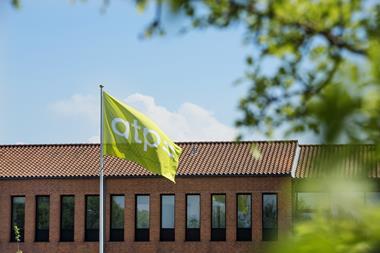Danish pensions heavyweight ATP has reported a return of just 3% on its return-seeking investment portfolio in the first half of this year - with some first-quarter gains having been lost as the rising cost of borrowing from itself ate into equity returns.
Martin Præstegaard, chief executive officer of the organisation managing the statutory pension fund, said: “Overall, we delivered an expected result in the first half of the year.
“The return on equities was very satisfactory. On the other hand, rising interest rates led to a loss on our bonds,” he said.
Both were reflected in the result, he said, adding that he would describe the latter as “expected and generally acceptable in view of market developments”.
Back in April, ATP reported a 4.1% first-quarter return on its investment portfolio - which consists of “free” assets not used to cover its pension guarantees.
Developments in the first half saw ATP’s net assets diminish to DKK693.3bn (€92.9bn) from DKK712.2bn at the end of 2023.
In kroner, ATP’s size is a far cry from the end of 2021, when scheme assets had a value of DKK947bn, although total assets have come back somewhat from their end-2022 level of DKK678bn.
The investment portfolio, which is equivalent to the bonus potential amounted to DKK107.8bn at the end of June, while the hedging portfolio - equivalent to the size of guaranteed pensions - was DKK543.8bn, according to the interim report.
According to data presented to journalists in Copenhagen this morning, two of ten asset classes and other elements in its investment portfolio resulted in losses in the latest six-month period.
Those were government and mortgage bonds, with a minus DKK7.79bn loss, and “funding” of the portfolio’s leverage, which cost the portfolio DKK2.81bn. Meanwhile, foreign equities produced a DKK4.87bn gain and Danish equities returned DKK3.09bn.
For many years, the cost of borrowing from its hedging portfolio did not appear in ATP’s reporting of the composition of investment portfolio returns, because it was around zero or even negative, but interest rates are now higher.
Regarding the overall scheme, ATP said it had to ensure the payment of lifelong and guaranteed pensions to all its members, which was why it hedged the interest-rate risk on pensions, adding that this had “worked as intended” in the first half of 2024.
The scheme’s interest-rate hedging made a DKK1.72bn loss in the first half, but in the full year 2023, that activity resulted in a DKK2.3bn gain.
ATP said the total result from investment and hedging after tax of DKK900m had been transferred to the bonus potential along with a pool of DKK1.6bn in connection with the life expectancy update for the year. (see box)
Commenting on the changes ATP introduced to its business model after they were approved by the Danish Parliament in 2021 - channelling a proportion of future contributions into certain assets meant to give higher returns - the pension fund said one of the new portfolios - life annuity with market exposure - was now fully phased in.
“However, the assets associated with this life annuity remain relatively limited, as contributions have only been made since 2022,” it said.
The supplemental hedging portfolio, meanwhile, was expected to be fully phased in over the next two years, ATP said.
ATP reports fillip in Danish life expectancy, but decreases provisions
Danes are living longer, according to the latest figures from ATP, but paradoxically, the pension fund is decreasing provisions backing its guaranteed pension scheme in response to the development.
ATP said that in the latest annual update of its life expectancy model, the life expectancy of a 67-year-old woman in Denmark had increased by 4.6 months - the biggest rise seen in 27 years - with a corresponding increase of around half that for men.
Camilla Fredsgaard Larsen, ATP’s chief actuary, said: “The progress in 2023 is remarkable, but you could also say it was necessary after two years of falling life expectancy.”
In both 2021 and 2022, life expectancy fell for both men and women, on the back of the COVID pandemic, the pension fund said.
“So 2023 became a turning point, and we have now made up from the decline of recent years, so in Denmark we’re are once again at the same level of lifespan that we had in 2020,” Fredsgaard Larsen said.
Even though increasing life expectancy normally means ATP has to increase its provisions, the opposite was the case this year, she explained.
“Although life expectancy has increased a lot this year, it has only come back to the level of 2020, so to speak,” Fredsgaard Larsen said.
“Years ago, we would have thought that life expectancy at this time would be higher. At the same time, the declining lifespans of recent years also mean that we are becoming a bit more pessimistic about the development of lifespans over a very long horizon,” she said.
“Overall, this results in a fall in provisions of DKK1.5bn,” the chief actuary said.





































No comments yet